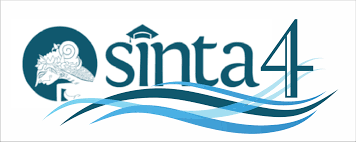THE EFFECT OF CIRCUIT LEARNING MODEL ASSISTED BY FLIP CHART MEDIA ON SCIENCE LEARNING OUTCOMES
Abstract
This study looks into how well flipcharts and the circuit learning model might improve scientific learning results and cooperative attitudes in Indonesian elementary school students. In order to address the widespread problem of low educational quality, the research proposes a novel method of instruction. The underutilization of engaging media in scientific education is the research gap, and the uniqueness is in suggesting the circuit learning model with flipcharts as a possible solution. The study used the independent sample t-test as a quantitative method for assessing hypotheses. The experimental group outperformed the control group in terms of learning outcomes, according to the statistical results. The findings of the t-test (p < 0.05) attest to the effectiveness of the circuit learning model utilizing flipcharts in improving science learning. In particular, there was an increase in student involvement, attention span, and general learning activities when flipchart media was used. These statistical results offer empirical backing for the suggested intervention, indicating that it has the capacity to close the noted research gap and improve students' academic and social learning experiences. The statistically significant findings of this study suggest that teachers should think about implementing the circuit learning model with flipcharts as a successful tactic to enhance scientific teaching outcomes

This work is licensed under a Creative Commons Attribution-NonCommercial-NoDerivatives 4.0 International License.
An author who publishes in the Jurnal Darma Agung agrees to the following terms:
- Author retains the copyright and grants the journal the right of first publication of the work simultaneously licensed under the Creative Commons Attribution-ShareAlike 4.0 License that allows others to share the work with an acknowledgement of the work's authorship and initial publication in this journal
- Author is able to enter into separate, additional contractual arrangements for the non-exclusive distribution of the journal's published version of the work (e.g., post it to an institutional repository or publish it in a book) with the acknowledgement of its initial publication in this journal.
- Author is permitted and encouraged to post his/her work online (e.g., in institutional repositories or on their website) prior to and during the submission process, as it can lead to productive exchanges, as well as earlier and greater citation of the published work (See The Effect of Open Access).













